Junkyard Gem: 2000 Toyota Camry LE with V6 and a manual(!)
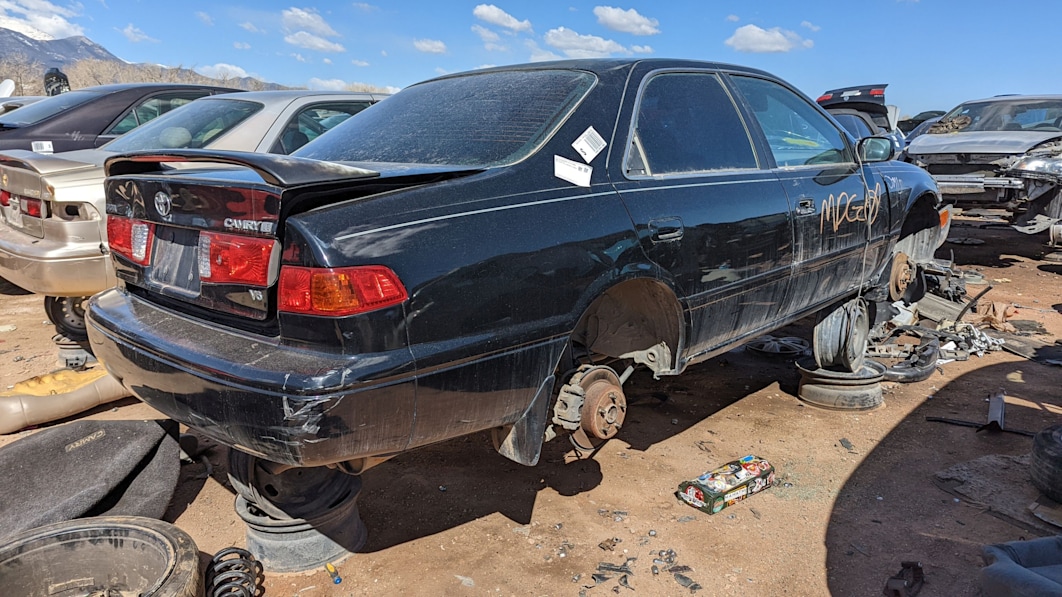
After nearly two decades of Corona sales in the United States, Toyota finally replaced the old rear-wheel-drive soldier with an all-new front-wheel-drive sedan in the spring of 1983. That car was the Camry (not to be confused with the earlier Celica Camry, which was available only in Japan) and it could be purchased with a five-on-the-floor manual transmission from the very beginning. When the first Camrys hit American streets with V6 engines during the 1988 model year, buyers could get a five-speed manual in those cars (though very few did), and Toyota USA continued selling new Camrys with the V6/manual combination until early in the 2001 model year. Here’s an incredibly rare 2000s Camry with that powertrain combination, found in a car graveyard in the shadow of Pikes Peak.
Car shoppers in the United States could still get a new four-cylinder Camry with a five-speed manual through the 2011 model year (some sources claim that a few 2012s were sold here with three pedals, but I have become increasingly skeptical about that), and nearly all of those later cars were low-trim-level units were likely bought by penny-pinchers because the automatic cost extra.
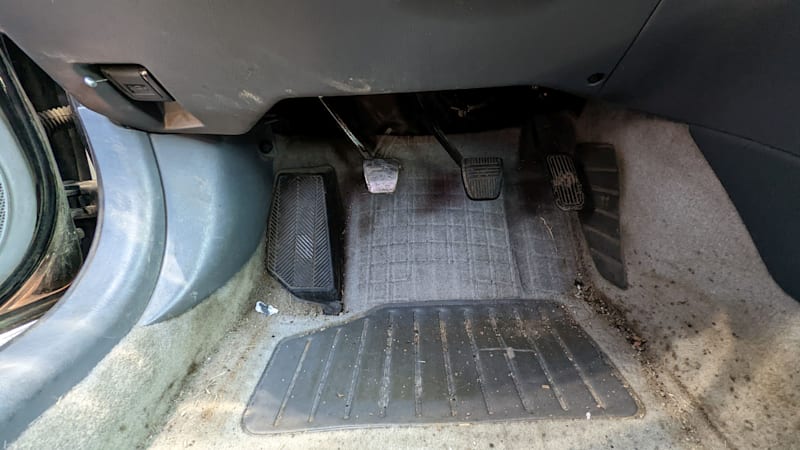
A car shopper in 2000 who sought a sedan with big power and a hot-rod manual transmission, on the other hand, had plenty of choices much sportier than the Camry. The Ford Contour SVT, say, or the Nissan Maxima SE, both of which could be had for Camry V6 money. Then there was the Camry Solara, which subtracted two doors and added a lot more cool (plus an extra six horses) to the same bulletproof platform. Whoever bought this car new wanted a sleeper, something (reasonably) fast and invisible.
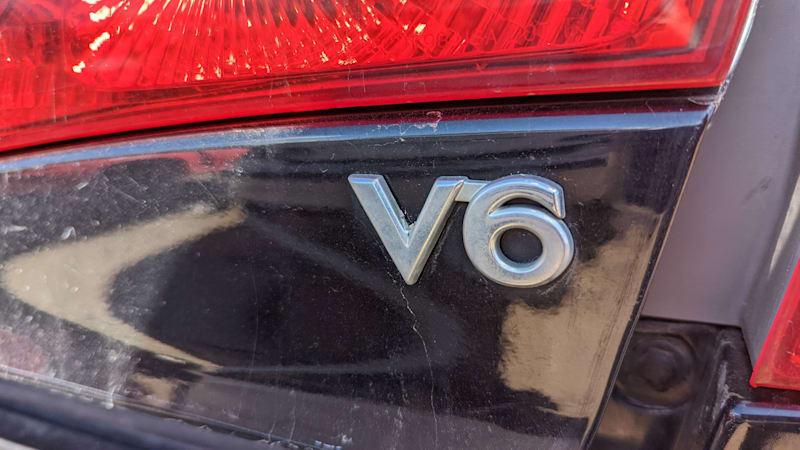
To give you an idea of how rare this car must be, I peer into hundreds of junked Camrys every year during my wrecking-yard travels (because I’m always looking for manual Camrys and high-mileage machines) and the newest V6/manual Camry I’d found prior to this one was a 1991 model.
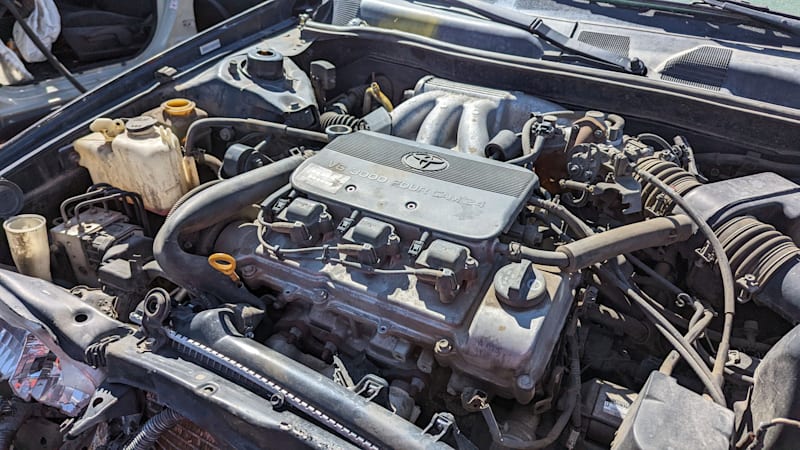
The horsepower rating of this 3.0-liter V6 came to 194, which was 26 less than the same-year Maxima SE’s V6 and six less than the V6 in the Contour SVT. Still, this Camry would have been fun enough to drive.
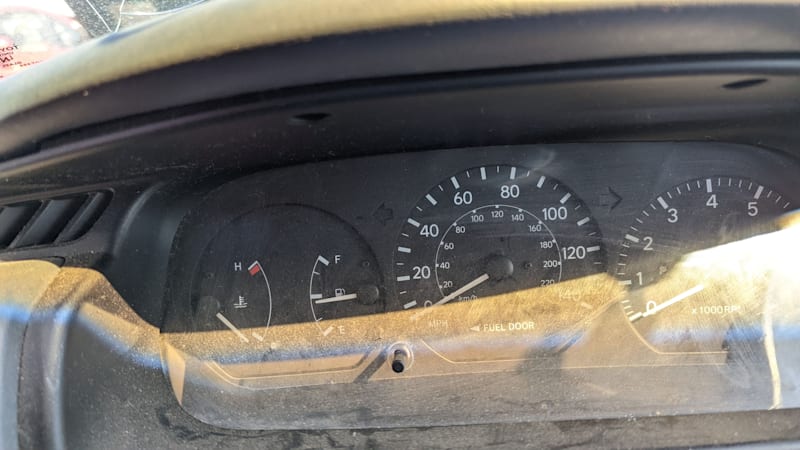
Toyota had gone to digital odometers for the Camry by this time, so there’s no way to tell how many miles were on this one when its driving career ended (well, there is a way to boot up the ECU and read the odometer on a junkyard car but it’s a real headache).
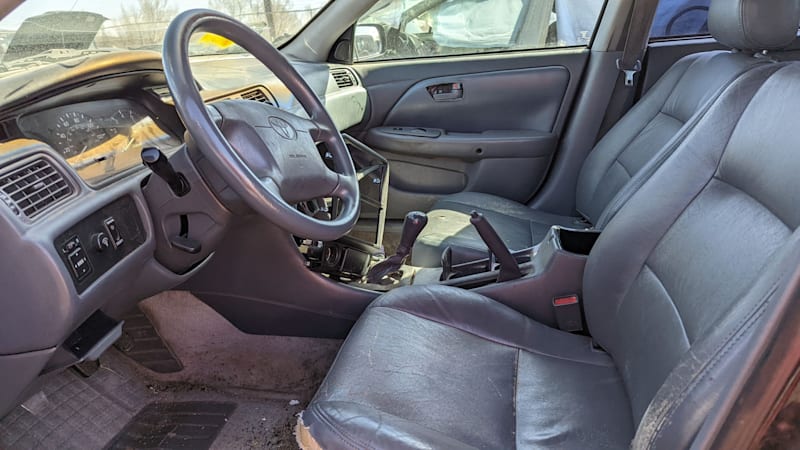
The interior looks worn but not abused and most of the body damage appears to have taken place after entering the junkyard ecosystem. I think this car was treated well and driven for at least a couple of hundred thousand miles during its life.
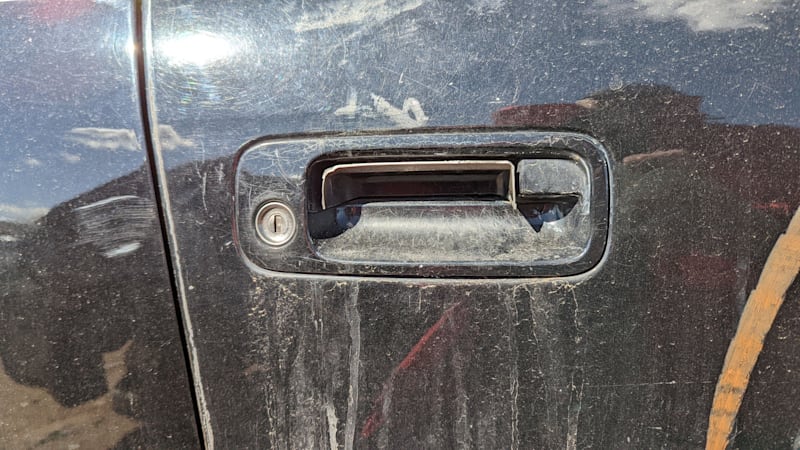
Because both front outside door handles are broken (a common problem on Toyotas of this era living in high-UV sunny areas), we can assume that the final owner of this car got it as a hand-me-down and couldn’t or wouldn’t get it fixed. There are no-budget ways of solving this problem, sure, but when the car is a sedan you can just open a back door and reach around to one of the front inside door handles.
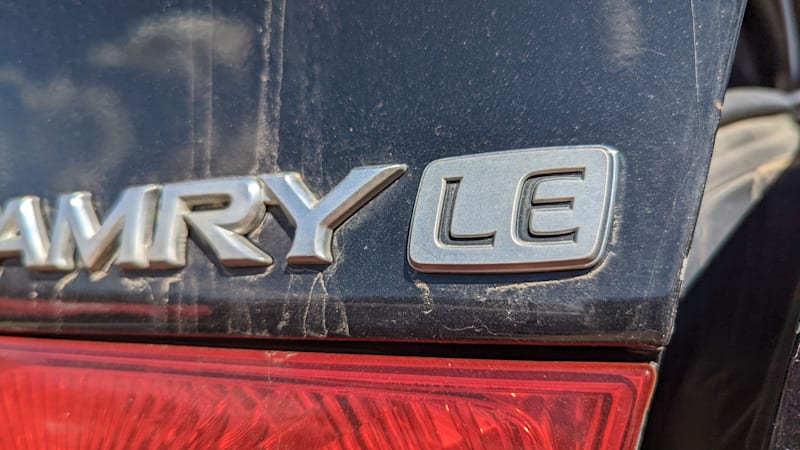
The LE V6 was the most luxurious trim level of 2000 Camry that could be purchased with a manual transmission. The MSRP on this car was $22,258 (about $37,161 in 2022 dollars) and the automatic added another 800 bucks (around $1,335 now) if you— like all but some tiny fraction of 2000 sedan shoppers— insisted on two pedals. Just to put that in perspective, the optional leather seats in this car cost $1,100 ($1,836 today).
Remember the novelty smash hit “I’m Too Sexy” from 1991? Toyota’s marketers did, nearly a decade later, and this TV commercial was the result. Too sexy for the dry cleaning. Too sexy for the car wash. Or, as the text reads at the end of the commercial: you’re stylin’. every day.
I was hoping to find better commercials for this car’s JDM counterpart, but they seem pretty schmaltzy.



